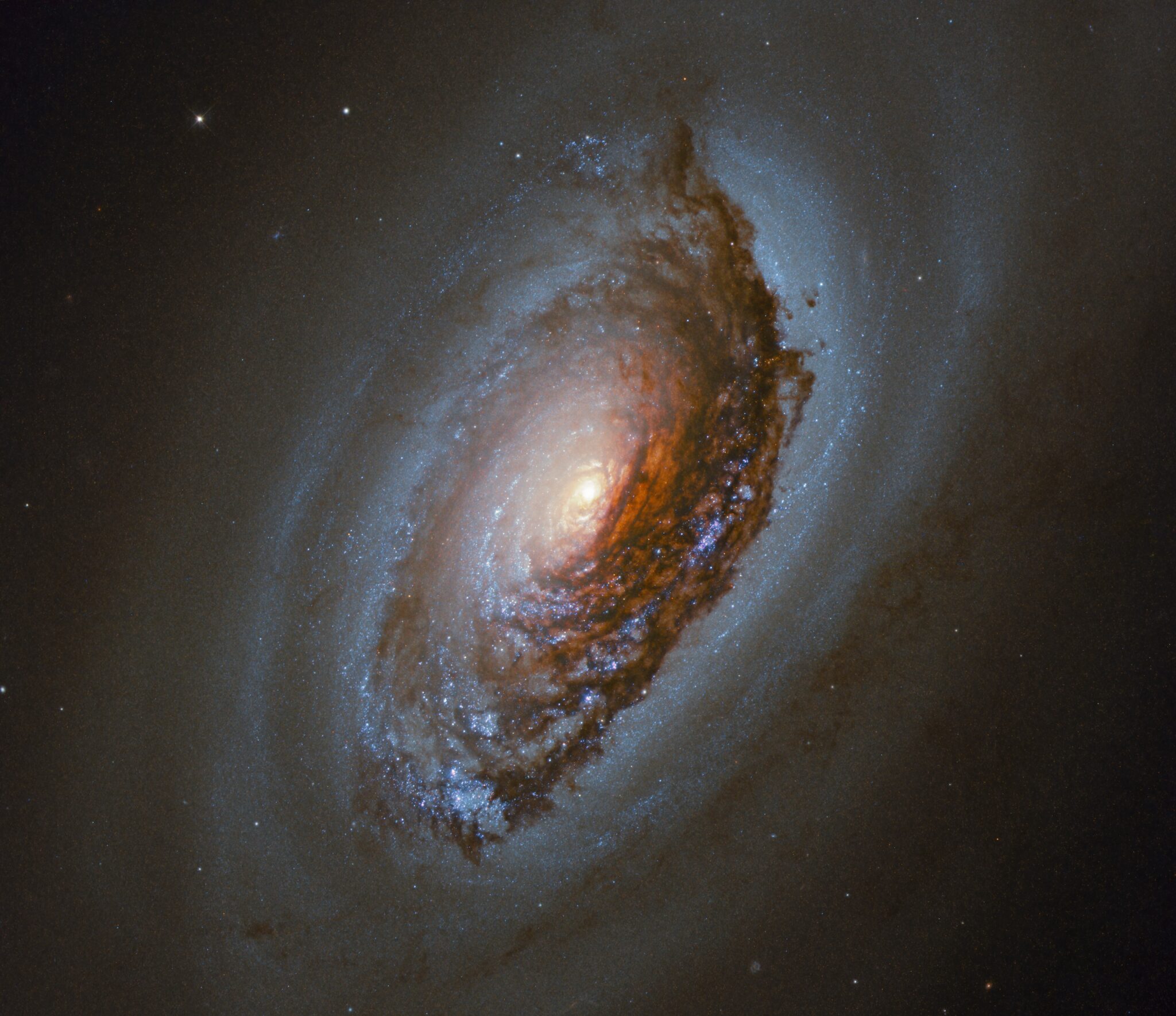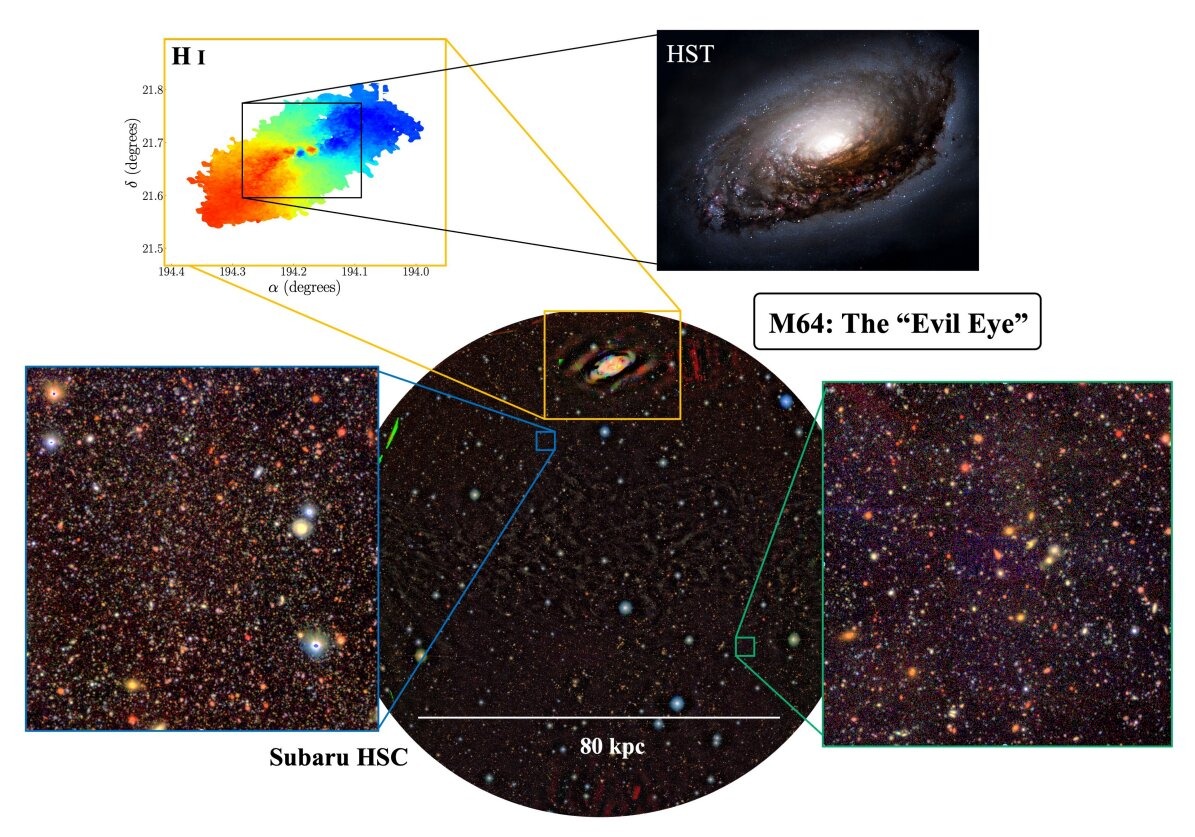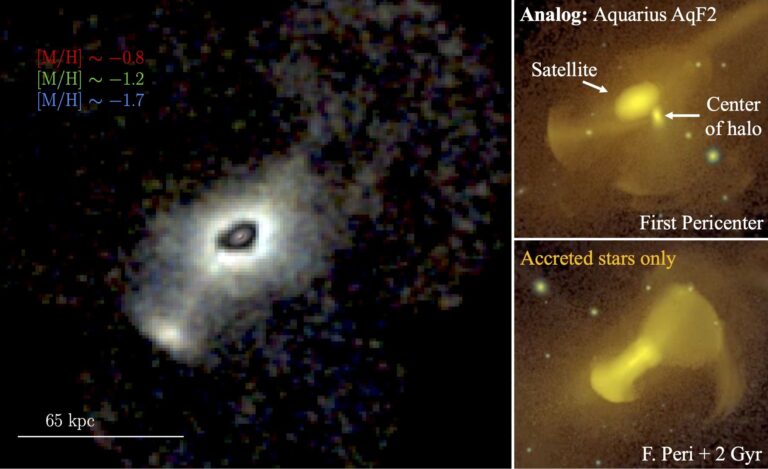An international team of astronomers, astrophysicists and cosmologists found evidence that the outer disk of the galaxy M64 originated from a smaller neighboring dwarf galaxy. The team wrote an article describing their findings, which was accepted for publication in The Astrophysical Journal Letters.

The galaxy M64 in the constellation Coma Berenices has been known to astronomers for 250 years. It is known for its sinister appearance, which is why it received the nickname “Black eye”. Although it has another, more attractive name – Sleeping Beauty.
Previous studies of the galaxy have shown that it is unique because its inner parts rotate in the opposite direction from the outer ones. This led to the assumption that the outer part was absorbed from another nearby dwarf galaxy. Previous work has failed to find any evidence of the previous existence of another galaxy.
In a new study, scientists finally found what others could not find – material near M64 that was left over from another smaller galaxy when it was absorbed.

To learn more about the M64, the researchers examined data from Subaru’s Hyper Supreme-Cam telescope, looking at areas around the galaxy rather than directly at it. Thus, they found evidence of galactic halos – they are known to form during galaxy mergers.
They also discovered a dense group of stars known as the shell – such formations also occur during galaxy mergers. Then the team created a simulation to depict the shell, and it showed that it was consistent with previous findings regarding other mergers, when a smaller galaxy is pulled into a larger one. The team then confirmed their hypothesis by examining data from Hubble. This allowed them to make estimates regarding the composition and mass of the galaxy that they suspected had been absorbed.

Scientists discovered that both galaxies were previously similar to the Small Magellanic Cloud; it is a dwarf galaxy adjacent to the Milky Way. It has been found that its density is approximately 500 million solar masses, which is roughly equivalent to the mass of the hydrogen disk that forms the outer part of the galaxy M64.
In conclusion, the researchers suggest that, taken together, their work offers a strong argument in favor of cannibalizing the dwarf galaxy as the source of the outer hydrogen disk of the M64 galaxy.
Earlier we reported on how the giant galaxy turned out to look like a potato.
Follow us on Twitter to get the most interesting space news in time
https://twitter.com/ust_magazine

